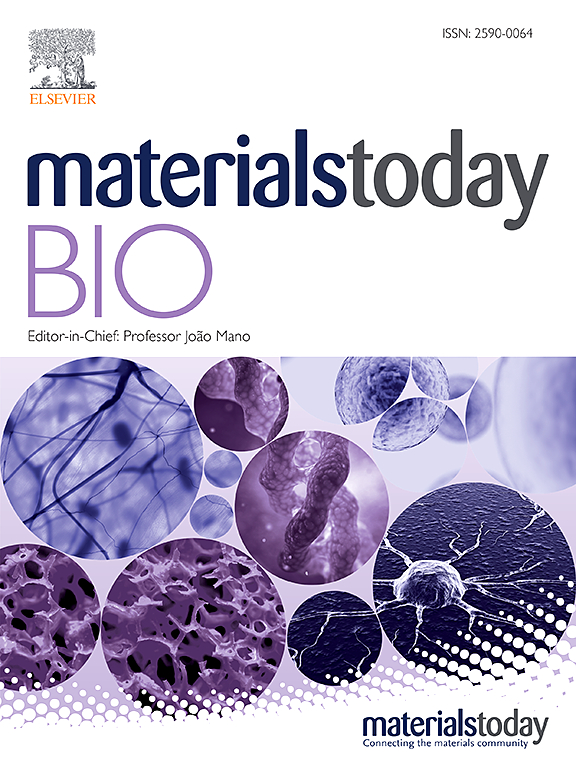Development of a BMU-on-a-chip model based on spatiotemporal regulation of cellular interactions in the bone remodeling cycle
IF 8.7
1区 医学
Q1 ENGINEERING, BIOMEDICAL
引用次数: 0
Abstract
Bone remodeling is essential for maintaining bone homeostasis throughout life by replacing old bone with new tissue. This dynamic process occurs continuously within basic multicellular unit (BMU) through well-coordinated interactions among osteocytes, osteoblasts, and osteoclasts. However, a precise in vitro model that accurately replicates this mechanism has not yet been developed. In this study, we created a human in vitro BMU-modeling chip platform by tri-culturing cells within a chip unit integrated into a tissue culture well plate, enabling high-throughput three-dimensional (3D) cell culture. To establish the tri-culture, human osteoblasts were isolated from human surgical bone samples and differentiated into osteocytes within collagen gel inside the chip unit. Subsequently, osteoblasts and peripheral blood mononuclear cells (PBMCs) containing osteoclast precursors were added to the chip unit. To simulate each phase of the bone remodeling cycle, we optimized the tri-culture process by adjusting the timing and using two types of osteoblasts at different stages of differentiation. The completed tri-culture model successfully mimicked the bone formation phase. When receptor activators of nuclear factor kappa-Β (RANKL) and macrophage colony-stimulating factor (M-CSF) were introduced, the cells exhibited characteristics of the reversal phase, where osteogenic and osteoclastogenic environments coexist. Additionally, using more differentiated osteoblasts within the tri-culture platform induced osteoclast differentiation, resembling the bone resorption phase. Overall, our model effectively replicates each phase of the bone remodeling cycle in BMUs, both spatially and temporally. This advancement not only facilitates the study of the intricate mechanisms of bone remodeling and cellular function but also aids drug development by providing a robust bone model for testing target drugs.

求助全文
约1分钟内获得全文
求助全文
来源期刊

Materials Today Bio
Multiple-
CiteScore
8.30
自引率
4.90%
发文量
303
审稿时长
30 days
期刊介绍:
Materials Today Bio is a multidisciplinary journal that specializes in the intersection between biology and materials science, chemistry, physics, engineering, and medicine. It covers various aspects such as the design and assembly of new structures, their interaction with biological systems, functionalization, bioimaging, therapies, and diagnostics in healthcare. The journal aims to showcase the most significant advancements and discoveries in this field. As part of the Materials Today family, Materials Today Bio provides rigorous peer review, quick decision-making, and high visibility for authors. It is indexed in Scopus, PubMed Central, Emerging Sources, Citation Index (ESCI), and Directory of Open Access Journals (DOAJ).
 求助内容:
求助内容: 应助结果提醒方式:
应助结果提醒方式:


